A Beginners Guide to Stealth Camping
June 14, 2023
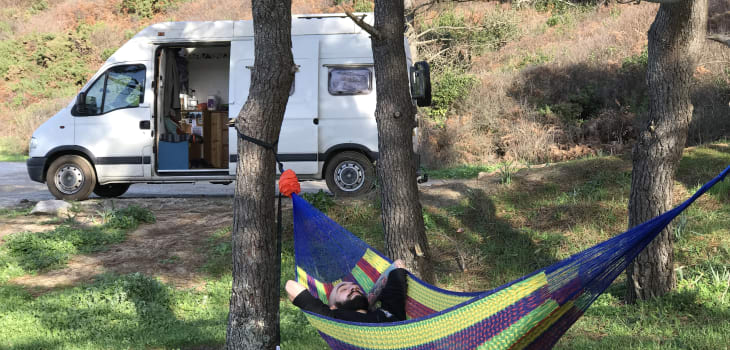
Photo credit @sebsantabarbara
Van life is built for wild or stealth camping. Camping in campsites is all well and good, but why would you want to park up with a bunch of other people playing Oasis songs badly on a guitar at 2a.m. when you could be basking in the silence of a forest or parking beside the ocean and listening to the waves. Sounds like a no-brainer, right?
I stealth camped in a camper van for five and a half years, with 13 months of that time spent parked up in the same city while working full-time. So, I like to think I know a thing or two about how to stay off the radar while travelling the world for free.
Over the course of this article, I’ll give you a deeper insight into what stealth camping is and how to do it, with lots of tips and tricks for your own van life adventures along the way.
What Is Stealth Camping?
Let’s start with the basics. Stealth camping is the act of parking your camper van or motorhome in any area without paying for a parking spot, ranging everywhere from residential streets to the middle of the countryside. It’s sometimes referred to as boondocking, free camping or wild camping, but it’s all the same thing.
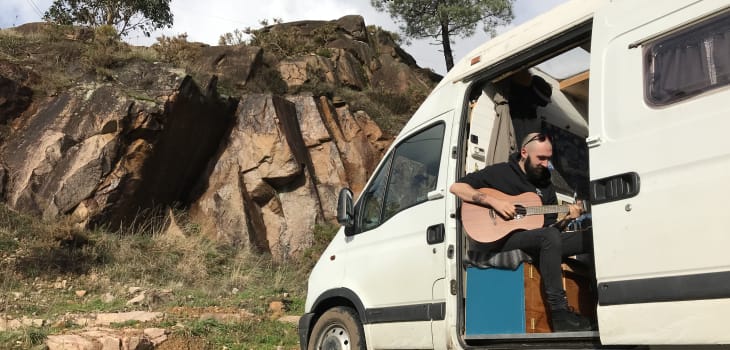
Photo credit @sebsantabarbara
As I mentioned above, I have plenty of experience stealth camping in the UK. I lived in my van in the same city in Yorkshire for 13 months while working full-time at a local music venue. I didn’t pay an electricity bill the entire time (nor for the following 4 years either), living completely self-sufficiently thanks to my solar panels and split charge relay.
I also got to park near the expensive end of town and enjoy the view for free!
Stealth camping is all about keeping yourself to yourself. You leave no trace, essentially remaining sneakily invisible, moving from place to place and not parking in the same spot for too long.
Is Living in a Van Legal?
Currently, as I write this blog, it is not illegal to live in a van in mainland Europe, the UK or indeed in the USA. There is no specific law stating that you cannot live in a converted van, motorhome or RV, so long as it is roadworthy and legal to drive.
I actually used to park up near a police station every now and again, and they definitely would have seen the smoke coming out of my chimney!
So, now that we know a little about the basics, let’s crack on and discover how to stealth camp!
Top 10 Tips for Stealth Camping
1. Learn How to Blend In
Honestly, blending in isn’t rocket science. If you have a white panel van like an Opal/Vauxhal Movano or a Mercedes Sprinter, then you can pretty much park up everywhere and no one will even bat an eyelid. So long as you have some blackout curtains to stop light shining out when you’re inside (providing you have windows), then they won’t even know that you’re in there. As you’ve already read, I had smoke coming out of a chimney in my van, and people still didn’t bat an eyelid. Most passers-by are too busy wondering what they’re going to have for tea or how they’re going to spend their evening to care about whether someone is living in a van. As long as your possessions don’t spill out onto the street and you try not to open your door as a party of people are walking past, you’ll remain inconspicuous.
2. Park Outside of the City Centre and Use Public Transport
I was lucky enough to be able to park up right outside my work on the odd occasion that I needed to be in work early, but while travelling Europe after becoming a writer full-time, I often parked on the outskirts of cities and used trains to head into the touristic destinations.
It’s much better to park your van where there are more green spaces or around other camper owners. You’ll find a lot of camper van parking spots in ‘dirt ground areas’ on the outskirts of major cities, places where you can hide in plain sight and utilise the safety of other camper owners being around to protect you, your home and your belongings.
3. Try to Keep Inconspicuous
I’ve mentioned this a little already, but remaining inconspicuous really is the key to being a great stealth camper. Don’t, for example, paint your van bright pink and put your Instagram logo on the side in big yellow letters if you want to stealth camp in a town or city.
If you can, just stick to plain old white or black — something boring that won’t draw attention, too much. I used to keep a wheel clamp on mine whether I was in it or not to further make it look like no one was inside. Plus, when I did leave the van to go for a walk, I knew that no one would be able to steal it!
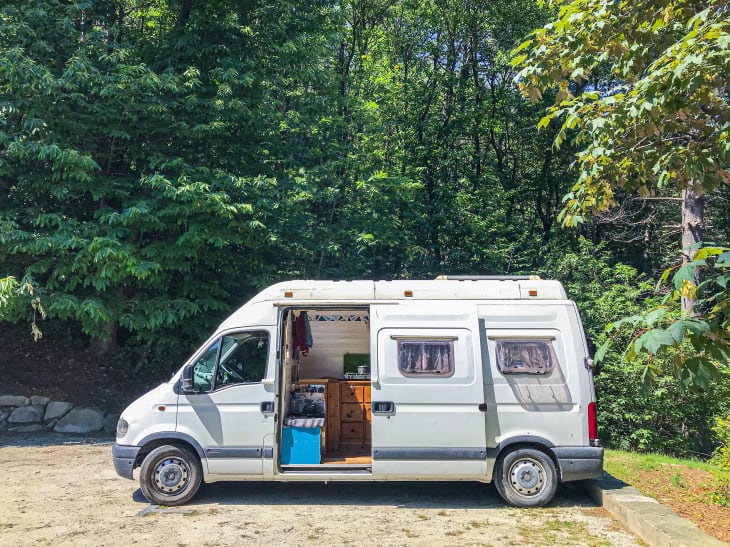
Photo credit @sebsantabarbara
4. Switching Up Stealth Camping Spots
This is one of the most important tips I can give you when it comes to stealth camping: don’t stay in the same space for too long. I don’t mean ‘move every 30 minutes’ or anything, but try not to stay in the same space for more than 2 nights before moving on to the next spot.
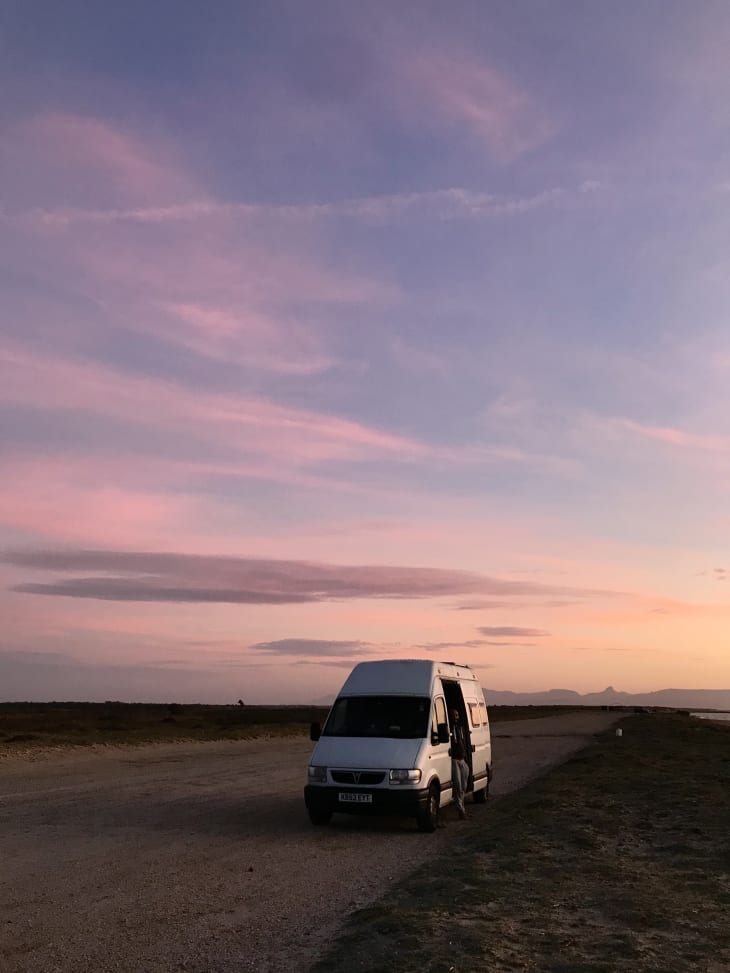
Photo credit @sebsantabarbara
I had three or four regular parking spots that I used to switch between: parking next to a racecourse, in an industrial estate and beside grassy areas in the posh part of the town.
5. Parking on Forest Land
Of course, stealth camping isn’t only about parking up in cities. If you’re reading this in the US, then you’ll know all about the benefits of the National Forest and BLM Land (Bureau of Land Management). The only people you’ll need to worry about bothering while stealth camping here are bears, wild cats and coyotes, and they don’t tend to care whether you leave your plastic chairs out or not.

Photo credit @sebsantabarbara
The general rule is that you can camp in rural forest areas in America for free, providing that they are not National or State Park sites. The same goes for Scotland here in the UK, where there is a ‘right to roam’.
Of course, there are some general rules to follow, such as not staying in the same space for longer than 2 weeks and going to the toilet well away from natural water sources. And of course, leave no trace wherever you go so that other campers can enjoy the same areas once you’ve left.
6. Use Apps to Find Great (and Safe) Spaces
My favourite apps to use whether I’m travelling in the UK, US or mainland Europe are Park4Night and iOverlander. They are both community-driven apps that allow users to upload and log different areas that they have stayed in while documenting their experiences of each place.
Find free places to rest for the night: secluded forest areas, beach-side parkups, water fill-up spots perfect for doing a bit of washing, truck stops, rest stops, inner-city street parking, spots without height barriers — the list is endless.
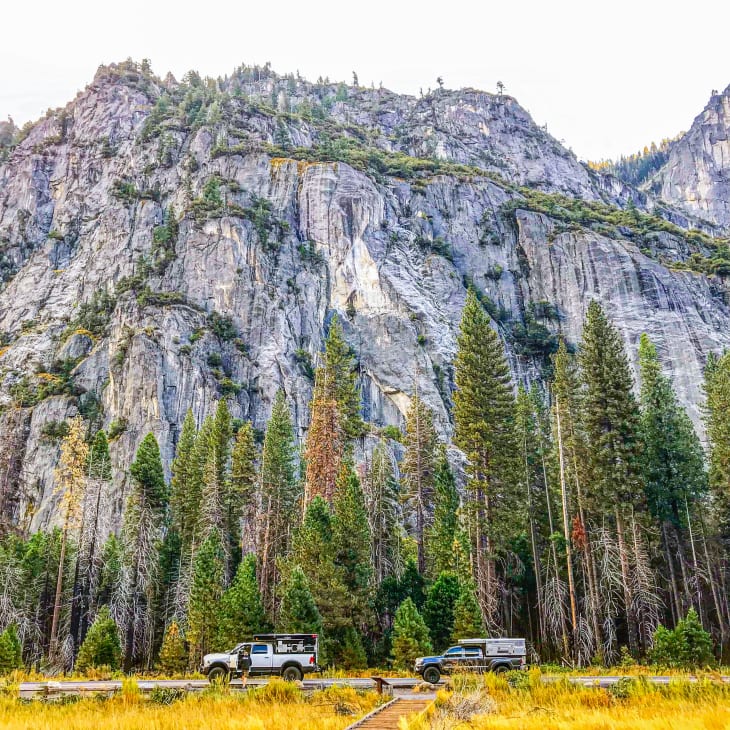
Photo credit @sebsantabarbara
If you are stealth camping in the same city as I was, then apps will definitely help you mix up your spots a little, and they’ll certainly come in handy for when you head out into unknown territories and need a place to call home for a night or two.
Or 10 nights if you’re me in Sardinia — that place has some amazing places to park up in the middle of nowhere!
7. Things to Look Out for While Stealth Camping
The general consensus when it comes to stealth camping is that you’ll be eaten alive by ghouls or visited by the Goblin King in the small hours of the morning. Neither of these things happened while I was stealth camping, but it does pay to be on the ball (and not the balls the Goblin King carries in The Labyrinth). Use your gut is the advice that I always give people — your gut intuition never lies.
It doesn’t matter where you come from, and if you’ve never visited a place before, it’s not hard to tell when you’re in a bad area.
Always try to stay away from places with broken pieces of glass or lots of graffiti on the walls. Likewise, overnight parking next to a club or pub where people are leaving inebriated isn’t a good idea. If you’re using apps, read the comments to see what other experiences users have had to get a better idea of the area’s safety.
8. What to Do If the Police Come Knocking
I remember someone once telling me that ‘you haven’t achieved true vanlifer status until you’ve had an unexpected visit from the police’. It will happen at some point, probably as you’re nodding off to go to bed, though it’s not anything to worry about.
While I was in the UK, I never had a visit from the police at the nearby police station. It happened a couple of times while travelling, but each time the police just gently asked me to move on once I had slept or finished my breakfast.
The first time it happened while I was overnight camping, the Carabinieri told me the graveyard car park near Venice centre was off limits, but they allowed me to stay for one night if I told everyone in my articles that they couldn’t stay there (and I’m still keeping that promise, Signor!)
The second time saw the Carabinieri helping me to escape a prostitution hotspot on the outskirts of Turin that looked VERY different when I parked on the street in the quiet, quaint little town during the day.
Which brings me to my next tip…
9. Make Sure You Park Up at a New Place During Daylight Hours
Honestly, I had no idea whatsoever that the place I had parked up in near Turin was so dodgy, and that was even after arriving during the day. A lovely country street with a stately home at the end of it just shouldn’t be a dangerous area, right?
You can always get a much better scope of a place when you arrive in the daytime. It’s easier to see which other stealth campers are there, whether the area looks clean, and to spot any other red flags that might make you feel uncomfortable during your stay. Likewise, you can see the route to an RV parking spot much easier when it’s light; the last thing you want is to try and tackle a massive rocky slope in the dark.
Keep your wits about you and always check your surroundings as it starts to get dark. If you see people prowling past your van as it moves into evening, then it’s probably a good time to get the heck out of your parking spot as fast as possible.
10. What to Do When Leaving Your Van Unattended
It would be crazy if we worried about leaving our house unattended every time we left it and went to work, right? The thing is, your house doesn’t move, and a van, obviously, does. Understandably, the fear of having your rolling home broken into or stolen is a big one, especially the thought of having your home taken completely and having nowhere to sleep for the night.
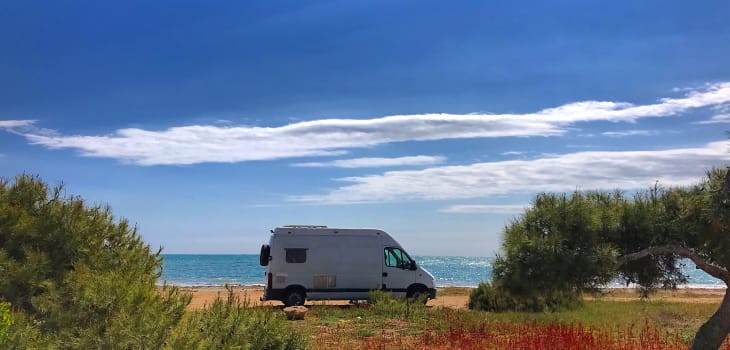
Photo credit @sebsantabarbara
The truth is, though, that this happens very rarely. My last van had windows and a chimney in it, and it still never got stolen or broken into. And leaving your van is something that you just can’t avoid, which is why there are some important measures that you can take to put your mind at ease while you head out on adventures.
Firstly, fit a GPS tracker to your van and wire it up to your van’s starter battery so it never runs out.
Place external locks on the sliding and rear doors. Not only do these make it harder to break into your van, but they also act as a visual deterrent to put off thieves.
Some other useful visual deterrents are steering wheel locks and tyre clamps. People will think twice about trying to steal a van with so many locks on it!
Whenever I left the van, I used to place all of my valuables in a safe that was bolted to the floor of the van in the back of my garage area. No one could steal the van because of the wheel lock, and if they did manage to break through two locks on my rear doors, then they definitely wouldn’t be able to get into the safe!
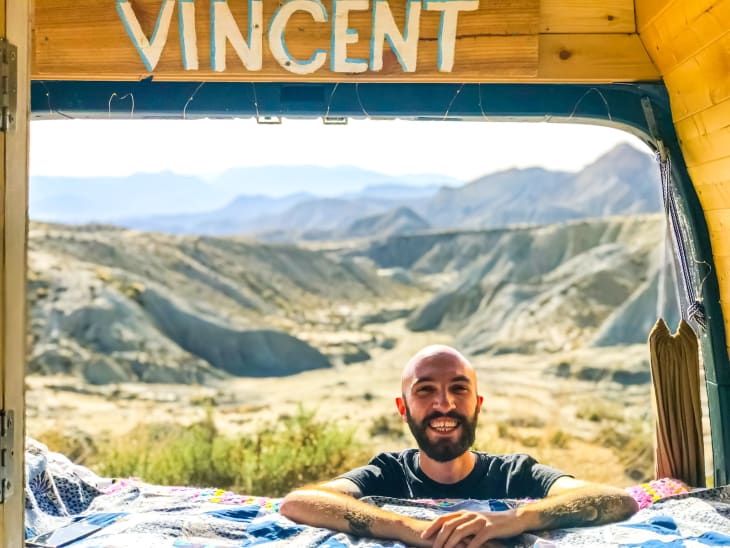
Photo credit @sebsantabarbara
So, there you have it. I hope that you enjoyed my top 10 tips for how to stealth camp safely. As long as you keep your wits about you and plan ahead, you can enjoy being in the heart of nature every time you head out in your van. Don’t forget to send us some pictures of your travels on the Lippert Instagram pages, and join us back here again for another van life blog very soon!
About the Author

Lippert guest blogger, Sebastian Antonio Santabarbara, is a thirty-two-year-old writer from Yorkshire, UK. His first breakthrough role came as the Head of Written Content for Van Clan, an online media brand documenting the van life movement with a weekly reach of over 5 million readers. This role has led to Sebastian being head-hunted to write several inspirational non-fiction books on alternative living (to be published by Frances Lincoln 2022/23) and Van Life for Dummies (published by John Wiley & Sons Sept 2022). He is also the Editor in Chief for Retro Dodo, a media/news company with a monthly reach of 1 million people. Follow his travels on Instagram!
Recent Posts
7 Best Countries for Wild CampingTop Tips for Self Van Builders
5 Best Camper Van Batteries
Common Van Life Problems and How to Combat Them
How Much Does Vanlife Cost
How to Save Space by Choosing the Right Campervan Bed Insights From Vanpuravida
5 Easy Van Life Recipes
Is Vanlife Legal?
Expert Tips for Cleaning a Campervan
Things You Need to Know When Living in a Camper
View All ›
Never miss a blog post!
Subscribe to Lippert’s blog and receive an email when a new one is posted.